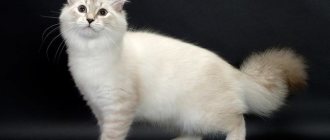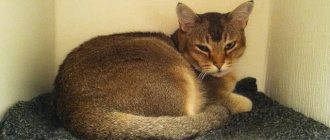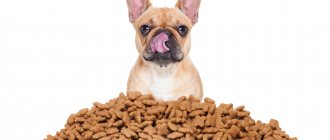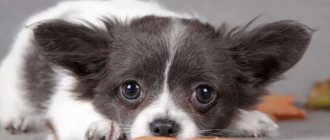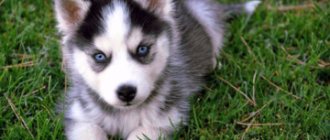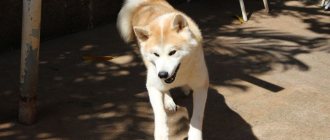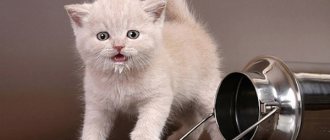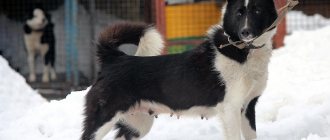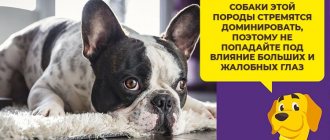Origin story
The true origin of golden retrievers has long remained a mystery. According to one legend, they performed in a traveling circus, where Lord Tweedmouth I saw them in 1856. After talking with the trainer, he found out that the artistic dogs with a golden color come from Russian Caucasian breeds. The lord bought them for a decent sum and transported them to an estate in Scotland. Tweedmouth quickly saw the hunting talents of the new pets and purposefully began selection. The breed is called the Golden Retriever.
This version was accepted by the Kennel Club of the United Kingdom and received official confirmation in 1913. However, already in 1927 it was called into question. Thanks to the efforts of researchers Elma Stokens and R. P. Eliot, the mystery of the origin of Golden Retrievers was finally revealed. The results of the "investigation" became available to the public in 1959.
It turned out that the first puppy with a golden color was bought by Lord Tweedmouth I from Lord Chichester, a Scottish breeder, in 1864. The baby received the nickname Noyce. Four years later he was crossed with a tweed water spaniel. The litter consisted of four golden puppies, which were later bred with Irish Setters. During further selection, the Golden Retriever was crossed with the Black Retriever, Setter, Spaniel, Bloodhound and Labrador.
The breeders managed to breed an intelligent gun dog that can retrieve game from both land and water. The task of the retriever is to accompany the owner during the hunt and wait for the signal.
The first golden puppy was brought to Russia in 1989.
Origin
The Golden Retriever, a dog breed also called the Golden Retriever, was bred in Great Britain probably in the 19th century.
Initially, the breed was intended to search for game, but then became widespread throughout the world as a companion dog. At the moment, it is one of the most popular in Western Europe. The legend about the appearance of the Golden Retriever breed refers us to the tours of the Russian circus in Europe. The English Lord Dudley Majoribanks Tweedmouth, having attended the performance, was amazed at the intelligence of circus dogs and bought several for breeding for hunting purposes. Today this is just a beautiful story, and the main version of the origin of the breed is the crossing of a male retriever and a female tweed water spaniel. Further selection and improvement of hunting characteristics made it possible to obtain a golden retriever in the modern understanding of the standard of this breed. When breeding, special attention was paid to the sensitive sense of smell of these dogs, since killed game was not easy to find. This feature of Golden Retrievers, as well as their high intelligence and balanced psyche, allows them to be used as customs and airport workers - they look for drugs and explosives or toxic substances.
If you decide to become the owner of a Golden Retriever, we recommend taking a puppy from a trusted kennel or charitable organization. It will be better if he has already been treated for fleas and ticks and has undergone primary vaccination.
Description of the breed
The Golden Retriever is a strong, well-built dog with a sunny coat. She is known for her sharp mind and endurance.
Breed standard:
- Height up to 61 cm, weight up to 41 kg.
- The head is of good proportions and correct shape. The forehead is wide, but not massive. The muzzle is long and neat. The nose is medium in size, the nostrils are large and open. The desired color is black. The lips are dense, pressed closely to the teeth, and have small jowls. The jaws are strong and well developed. The bite is claw-shaped.
- The eyes are set wide. Shape: oval or almond-shaped. The iris is colored in shades of brown and nut.
- The ears are small, hanging, medium-set (at eye level), covered with short hair.
- The neck is muscular, moderately long, without dewlap. Softly blends into the shoulders.
- The body is elongated, slightly elongated, correctly balanced. The back is strong and straight, of moderate width. The stomach is slender and toned.
- The tail is long, straight, with abundant feathering. Never bent.
- Limbs are straight, powerful, muscular. The paws are round and medium in size. The fingers are pressed tightly together.
Goldens have a recognizable appearance and are one of the most popular breeds in the world.
Color
Goldens are famous for their thick coat. It can be wavy or straight. The pile has water-repellent properties. The undercoat is abundant and dense. The fur forms fringes on the ears and limbs. The hair on the body, ears and chest is especially long. Color - all shades of cream and golden. White is acceptable as a “patina” in the chest area. Red tones are undesirable.
Character
There are very few negative reviews about the personality of Golden Retrievers. This dog breed has earned the love of millions thanks to its friendly, calm disposition. It's hard to imagine a pet more oriented towards communicating with people. Goldens love to participate in family activities and do not like to sit idle. Their tendency to be helpful makes them excellent service dogs: retrievers work as guide dogs, rescuers, and participate in psychological assistance programs.
Goldens are true empaths. They subtly sense the mood of their owners and will do everything to prevent them from being sad. Retrievers are often used in zootherapy. They help sick children, pensioners and participate in various rehabilitation programs. Just being near a retriever charges a person with positive emotions and puts him in a positive mood. Children love these dogs very much and thrive when interacting with them. Retrievers are the best babysitters for babies. They will never offend a child and will tolerate even careless treatment.
The task of parents is to explain to their children the rules of behavior with animals and to prevent cruelty. If a dog does not show retaliatory aggression, this does not mean that this will always be the case.
Goldens are not prone to zoo aggression and find a common language with any animal. They will not provoke a fight and use every opportunity to avoid conflict. In the event of an attack, they will not flee, but will give the offender a worthy rebuff. In addition, the breed is known for its unobtrusiveness. They know when the owner wants to be alone and respect his wishes. Retrievers need to feel needed, so if a person is not ready to pay a lot of attention to the pet, he should reconsider his choice of breed.
A gentle, gentle character can turn into cowardice. Therefore, when choosing a dog, you need to take a closer look at the behavior of the puppy and the parents. Goldens also have a hard time concentrating. They are easily distracted during exercise and are overly trusting: dogs can follow a stranger who offers a treat.
Breed description, height and weight
The height of males is 55–60 cm, weight is 25–45 kg.
Bitches are usually slightly smaller in height – 50–55 cm, weight – 25–35 kg.
The appearance of the Golden Retriever is harmonious and proportional; the dogs are usually active, but in moderation. They have strong and muscular legs, a powerful chest with pronounced ribs and a flat, non-sloping back. The head is not too massive, with a pronounced transition from the forehead to the muzzle, but without sharp angles, and is proportional to the body. The eyes are dark brown with dark rims, set wide apart. Golden retrievers have strong jaws, teeth are large and sharp; The ears are medium in size and hang down slightly. The dog's coat is straight, slightly wavy, with a dense and waterproof undercoat.
Care and maintenance
Retrievers quickly adapt to their environment, so they can be kept both in the house and in the apartment. Some owners keep animals in enclosures. This breed is known for being active and energetic. Dogs need regular, long walks. They love agility training and outdoor games.
Goldens are prone to excess weight, so do not neglect training.
Retrievers shed a lot, especially during the spring months. You need to spend at least 15 minutes a day brushing your animal. After a walk, goldens are combed especially carefully. Bath dogs as needed using special shampoos. Retrievers love water, so washing them is a pleasure. Ears are examined after each walk. They often get filled with blades of grass and dirt. The closure of the auricle provokes the occurrence of infectious otitis media. During the period when mites are active, the ears are especially vulnerable: the parasites hide in thick pile or crawl into the auricle.
Goldens are prone to inflammation of the choroid of the eyeballs, so hygiene should not be neglected. The eyes are cleaned of secretions using a cotton pad soaked in warm water, chamomile decoction or a special product. Nails are trimmed as needed. Teeth are brushed weekly.
Feeding
Proper nutrition is very important for health and longevity. Retrievers can be fed both high-quality premium food and dishes made from natural products. Drying has a balanced composition and does not require taking additional vitamins. In the case of natural animals, feed additives will have to be introduced.
Homemade meals are prepared using the following products:
- lean meat (beef, turkey, lamb, chicken, rabbit);
- well-cooked beef offal (liver, lungs, kidneys, tripe);
- sea fish (1-2 times a week);
- buckwheat, rice, rolled oats;
- fermented baked milk, cottage cheese, kefir;
- egg (one per week);
- cabbage, carrots, zucchini, turnips, pumpkin, beets;
- greenery;
- vegetable oil (1 tsp per day);
- carrot, apple.
The daily intake of raw meat is 300 g. It should make up half of the daily diet. It is better to choose meat with veins and cartilage. Remove the skin from the chicken before serving. A quarter of the serving should be cereals and another quarter should be vegetables. Vegetables can be given raw (mashed) or stewed. Add 1 tsp to them. vegetable oil (preferably olive oil).
If your dog is prone to obesity, porridge should be excluded from the menu.
List of prohibited products:
- pork and other fatty meats;
- poultry tubular bones;
- milk;
- potato;
- legumes;
- wheat and corn (may cause allergies);
- bakery products made from yeast flour;
- sweet;
- salty;
- fat;
- smoked;
- roast.
Dry food must be at least premium class. The ideal option is super premium or holistic. In the production of cheap products, waste from slaughterhouses and allergenic fillers are used. Economy class food can cause severe poisoning and urolithiasis.
A quality product should not be:
- fat (more than 10-14%);
- too protein (more than 28%);
- grains
It’s good if the food is made from duck, lamb, or turkey meat. It is better to choose grain-free products or those based on oatmeal and rice.
Quality feeds include:
- Now;
- GO!;
- 1st Choice;
- Biomill;
- Arden Grange;
- Grandorf;
- Acana;
- Belcando.
The dog must have constant access to fresh water.
What needs to be done?
“Maintenance” of a retriever consists of a number of maintenance that the owner must carry out regularly in order to keep golden friend in good condition - this means both appearance (in particular, the absence of an unpleasant odor ) and general health. First of all, it is important:
- hygiene (cleaning ears, teeth, washing paws after walks);
- grooming (combing out excess hair, trimming nails, sometimes washing);
- daily examination, allowing timely identification of disease symptoms.
Teeth cleaning
A dog's mouth, like our mouth, requires cleaning, otherwise pathogenic bacteria will multiply on the mucous membranes and surfaces of the teeth. Inflammation and bad breath are unnecessary phenomena for a Golden Retriever, so we will teach the puppy to use toothpaste and a brush. Important points:
- “human” paste is not suitable - it contains unnecessary additives, and aggressive flavorings can harm the hunter’s sensitive sense of smell;
- you need a special brush - you can buy it at a pet store (it is especially convenient to use a brush in the form of a fingertip).
Start brushing the outer teeth, moving toward the inside of the jaw as your dog becomes accustomed to brushing. Do not try to brush all your teeth at once if your pet resists; it is better to postpone part of the procedure until tomorrow than to cause a persistent aversion to hygiene in him. Once you've dealt with the oral cavity, don't forget to reward your Golden!
When the dog is completely accustomed to the toothpaste and brush and can sit quietly throughout the entire process, teeth brushing will need to be done every two to three days.
Ear care
Golden retrievers are the owners of gorgeous furry ears, the care of which, like other grooming , should begin while the pet is still a puppy . Healthy ears do not require cleaning, but they should still be examined regularly. Contact your veterinarian if:
- the epithelium is damaged or inflamed;
- the ear canal is clogged;
- there is discharge or an unpleasant odor.
Most likely, the doctor will prescribe self-treatment of the ears with special solutions. Ask to show you how this is done right in the clinic - there is nothing complicated about the procedure.
It may be necessary to wash the inside surface of the ears if the dog gets dirty. Use lotion and a cotton pad, be careful not to pour liquid into the ear canal: this can lead to negative consequences, including the dog losing hearing.
Combing and washing
Caring for a Golden Retriever's coat (especially when shedding ) is the most time-consuming of all procedures. If you are just planning to get a Golden, be prepared for the fact that you will not be able to completely get rid of the fur: no matter how you remove it, there will always be some amount of hair at home. There are also advantages to this: the wool can be collected and knitted into a healing belt.
Goldens are the “coolest” of the retriever , and owners need to adapt to turn grooming from a feat into a routine task. For combing, you can use a comb and a furminator, but many owners of Goldens advise against using the latter, as they believe that it spoils the undercoat. You can experiment on your own and make your own decision.
Especially carefully and carefully you need to comb the dewlap, which all golden retrievers on the tail , belly and inner surface of the paws.
to bathe your Golden Retriever it can be done to speed up shedding, or if you notice that he's starting to smell like a dog It is better to use a special dog shampoo rather than your own. The approximate frequency of washing, according to reviews from Golden owners, is 1–2 times a month.
Be careful when drying your dog: it is best when the coat dries naturally. However, golden retrievers (especially puppies ) are susceptible to colds, and their health requires care and careful attention. Make sure that there are no drafts in the room where your pet is after bathing; during the cold season, use a hairdryer or refuse washing in favor of dry brushing the fur.
All these tips are relevant for dogs that do not participate in exhibitions - pets. If you plan to show your Golden, there is a whole range of grooming that you will need to learn (or leave to the professionals).
Training and education
Despite his intelligence and good-natured nature, the retriever needs training. He must know at least 4 commands: sit, lie down, next to me, towards me. Training begins at three months of age. Training is carried out in a playful way without the use of force. This breed is easily distracted, so the owner will have to be patient. He must create a program of varied training so that the animal does not get bored.
If you let your golden go outside to run around, he will most likely just lie down on the ground. Retrievers love group games. The best option is to buy a companion for the dog. You can have two females and even males. When training teams, praise and encouragement are effective. The main thing is not to overfeed. The workout should not last more than 10 minutes. Retrievers quickly lose patience and have difficulty concentrating.
Goldens love agility, Frisbee, and fetch. They will be happy to attend group classes where they can communicate with their relatives. In addition, professional training will help you avoid annoying mistakes that can delay the training process.
Photo of a golden retriever
When choosing a purebred Golden Retriever puppy, keep in mind that the main features of the exterior and character are inherited, so if possible, try to examine the dog’s parents. Ask to see pedigrees and exhibition diplomas.
We suggest you read: Library - Australian Shepherd care - Australian Shepherd description
Examine the puppy, the advantages will be:
- healthy appearance;
- absence of external defects;
- clean ears;
- clear eyes;
- clean skin;
- pink gums;
- White teeth.
A purebred baby should have:
- the skull is quite wide;
- the muzzle is deep, well defined;
- correct bite;
- ears of moderate length with correct fit;
- compact body;
- the chest is good;
- the pelvis is wide;
- dark eyes;
- nose and paw pads are black.
Maintenance and care
The place for the puppy should be bright, protected from drafts, and located away from heat sources. The litter must be kept clean; for this, use removable covers. Immediately introduce the puppy to the new home: take the pet in your arms and carry it through all the rooms.
Rules for handling a puppy:
- Lift it with 2 hands, clasping it with one hand under the chest and the other under the seat.
- Do not pick up the baby by the paws or by picking him up under the chest with your hands.
- Do not stroke his ears or head, do not put the collar over his head, otherwise the set of his ears will be damaged.
- Accustom your puppy to a collar from the age of 2 months; the walking equipment should be strong enough. It is necessary for the pet to get used to the muzzle.
Walks
Maintenance in an apartment or house requires daily walks (immediately after waking up, feeding). This will allow you to quickly train your dog to relieve itself outside. Start walking your puppy no earlier than after 14 days. after vaccination.
Take treats and toys with you. First, the puppy must do its business, then you can start playing with it. During walks, do not overload your baby, this leads to injuries to the joints and skeletal system. Alternate free exercise with walking. Make sure that the puppy is under 5 months old. did not jump from a height (since his skeleton was not yet strong).
Until the age of 10 months. The dog should not be allowed to jump over obstacles. Do not allow children to sit astride an older retriever, as this will cause the dog's back to sag. You can accustom your dog to a ski harness or sled no earlier than the age of 1.5 years. Swimming is beneficial: up to 6 months. – up to 20 minutes, from 1 year – up to 40 minutes. Subsequently, the load can be increased.
Golden Retrievers are very intelligent dogs and are highly trainable. The basis of good relationships should be goodwill. Representatives of this breed are very gentle and cannot tolerate aggression, loud screams, or physical punishment. They understand human speech perfectly, you need to talk to them more often. The dog must follow the basic rules:
- relieve yourself on the street;
- do not spoil things in the house;
- execute basic commands;
- respond calmly to street stimuli.
It makes sense to start real training when the puppy is six months old. Until this age, he perceives learning in the form of a game, so you should not expect him to flawlessly follow commands. In the future, there should be no concessions during classes. Always ensure that your pet does everything he is told.
An excellent training would be fetching, and the dog must always give back the item he brought. If the puppy bites or snaps, say “ew” and try to take the toy away. If this doesn't help, grab the puppy by the scruff of the neck and place him on his back. Hold him like this until he relaxes and stops growling. Repeat this every time the puppy refuses to give up the item you brought.
We suggest you read: Inflammation of the third eyelid in cats
Golden Retrievers destined for the ring need to be trained daily to stand, which they must hold for 1-2 minutes. Correct stance:
- the puppy stands firmly on 4 legs;
- the forelimbs are located under the body;
- the hind limbs stand slightly wider than the forelimbs;
- paws are located close to each other;
- back straight;
- the hock joints are perpendicular to the ground.
Diseases and life expectancy
Unfortunately, golden retrievers are not a healthy breed. They have a number of genetic abnormalities and are predisposed to cancer. They also often suffer from hip dysplasia and obesity.
The most common diseases include:
- hemangiosarcoma;
- lymphosarcoma;
- osteosarcoma;
- mastocytoma;
- hip dysplasia;
- epilepsy;
- raw eczema;
- diabetes;
- hypothyroidism;
- atopy;
- allergy;
- melanoma;
- laryngeal paralysis;
- cataract;
- glaucoma.
This breed is not suitable for owners who cannot pay for medical care.
On average, Golden Retrievers live 10-12 years.
Brushes and combs for golden retriever.
There are many fur combs, brushes, powder brushes, etc. in the pet store. I will only talk about those that I liked. After trying different ones, I chose only a few combs.
1) This is a comb with frequent and rarer metal teeth on one handle:
It fits very well on your Golden Retriever's paws, ears, neck and fluffy tail.
2) Oval brush for blow-drying and daily care. Should be used for long hair.
3) A double-sided brush with bristles and metal curved teeth with balls at the ends so as not to injure the skin:
How to choose a puppy
Before purchasing a puppy, you need to decide on the purpose of the purchase. If a person wants to get a faithful friend and companion, but does not intend to participate in exhibitions, kids from the pet class category are suitable for him. They are picked up at the age of 2 months. If the buyer is committed to a show career, he should think about breeding and show-class puppies.” In this case, the puppy’s age should be 6-7 months in order to evaluate the quality of the exterior. It is not recommended to buy a baby by hand. Such dogs are susceptible to genetic abnormalities and have behavioral problems.
When examining puppies, you should pay attention to the following:
- arrangement of living space;
- health status and behavior of parents;
- appearance;
- absence/presence of discharge from the nose and eyes, damage to the coat and skin, condition of the teeth;
- dog's gait;
- how puppies interact with each other;
- how they treat people;
- availability of necessary documents and medical history of parents.
The best option is to take a specialist or an experienced owner with you.
Where to buy and price
The Golden Retriever is a popular dog breed, so finding an officially registered kennel is not difficult.
The most famous include:
- Goldendaisy (St. Petersburg);
- Elmedano (St. Petersburg);
- Ambergold (St. Petersburg);
- Russian Retriever Club (Moscow);
- Cantrigold (Moscow);
- Amansi Golden (Moscow);
- Noris Allur (Irkutsk);
- Farvissh Gold (Chelyabinsk);
- Lusso Angelo (Volgograd);
- From Boykogo Dom (Ekaterinburg).
On average, a Golden Retriever costs 25,000-60,000 rubles.
Golden Retriever and Labrador: Differences
The Labrador and the Golden Retriever belong to the same canine group of retrievers. These breeds are very similar, so the difference between them is not always obvious. Labradors originate from the island of Newfoundland and were trained not only to retrieve shot birds, but also to retrieve fish from nets. Goldens are exclusively gun dogs. Both breeds are used as service dogs. The Labrador has a sharper sense of smell even than German Shepherds.
Labradors and Goldens have similar external characteristics. These are large, broad-browed dogs with floppy ears. They differ only in color and coat type. Labradors are a short-haired breed. Their pile fits tightly to the body and can be painted in three colors: black, brown, fawn. Retrievers have thick, wavy coats with abundant undercoat. Color - golden and cream.
Both breeds are known for their friendly, easy-going personalities. Labradors are perpetual motion machines and are ready to play all day long. Retrievers are more reserved. They are characterized by aristocratic manners and selectivity. Labradors, on the other hand, are incredibly trusting and are ready to leave with the first person they meet. They adore people and animals. Both breeds are great with children. Labradors need a controller: they often drop the child while playing. Goldens prefer teenagers.
Caring for a Golden Retriever
Experienced owners have absolutely no problems raising and caring for their pet. However, this experience is not immediately imparted to anyone, and if you are a novice breeder, then a breed such as the Golden Retriever will simply be the best for you. The fact is that this breed of dog is completely unpretentious in terms of care, and you can easily learn how to care for your dog. The Golden Retriever has very strong health, so his treatment and training will not burden you at all. It is not difficult for a dog to live comfortably in both urban and suburban conditions. But you, as the owner, should provide the dog with comfortable conditions so that the retriever feels just great and also gets used to his own home. In this article we would like to introduce you to the care of this breed in more detail. So, let's start with how to care for your dog's eyes. The pet's eye color should be transparent. The eyeball itself should not have clouding or other defects. Purulent discharge in the eyes of a dog is common, however, you need to understand that this can be the result of either a normal allergic reaction or real distemper. If the pus is released too much, then you simply need to contact a veterinarian about this problem. The dog's eyes need to be washed constantly! It is especially important to do this after a hunt or a long walk. You need to rinse your eyes with a cotton swab and water. Some owners use hydrogen peroxide to carry out this procedure, but this must be done very carefully so that the solution does not get into the dog’s eye. As for the ears, once a week you should carry out mandatory cleaning of the shell. It is correct to do this procedure in two stages. The first is rinsing the ear with a ten percent solution of hydrogen peroxide. The same cotton pads or swabs, or cotton swabs will help us with this. Please note that the stick must have more cotton wool than the standard one. After cleaning with hydrogen peroxide is completed, you need to wipe your ear dry with a napkin or a dry cotton pad. To keep your pet's teeth healthy, you need to create a special diet for him, which will include the right food. Apples, special vegetable cutlets, biscuits – all this is great for your pet’s teeth. Raw meat, previously poured with boiling water, will also be an excellent cleanser. But the best help in this matter is a special toy made from animal veins. It helps the dog get rid of not only plaque, but also tartar. It is very good if you brush your dog’s teeth with a special brush and toothpaste, which you can easily find in veterinary clinics. This will be followed by grooming. Since the golden retriever's coat is very thick, although not long, it needs to be washed with special shampoos and conditioners so that it does not lose its visual properties. In the store you can find a special shampoo for your dog breed. Also, from an early age, teach your dog to comb and cut his hair. This breed needs a fair amount of fur to feel comfortable and cozy, so don't overdo it with the haircut. Also remember that this dog is very active and needs frequent walks. And after walks you should take care of the coat most carefully. And the last thing you should pay close attention to is the retriever’s nutrition. The dog is large, strong, active, and this means that it requires a lot of protein (meat). Follow your dog's diet and he will always make you happy! Good luck to you and health to your beloved pet.
Pros and cons of the breed
| + | — |
| Faithful and devoted friends | They shed profusely |
| Beautiful hunting dogs | Not suitable for the role of watchman |
| Suitable for apartment living | Are happy to make contact with a stranger |
| Compatible with cats and other animals | Prone to cancer |
| Great with children | Have a short lifespan |
| Suitable for active owners | Requires patient training |
Golden Retrievers are ideal family dogs. They cannot live without communicating with people, they are very vulnerable. This breed requires affection, love and patience. They are distinguished by their delicacy: they will never impose their company. They enjoy playing with their relatives and other animals and adore children. Suitable for active owners who can devote enough time to the dog and pay for medical care.
Description and standard
General summary of characteristics:
| Lifespan | 10–12 years |
| Weight | female: 25–37 kg, male: 30–41 kg |
| Height | female: 51–56 cm, male: 56–61 cm |
| Wool | straight or wavy, thick undercoat |
| Color | cream, dark gold, light gold, golden |
| Character | reliable, smart, kind, trustworthy, confident, friendly |
| Usage | hunting, service, therapy and guide dogs |
Pets belonging to the Golden Retriever breed are of average size:
- at the withers the height is no more than 60-61 cm in males, slightly less in females - 55-56 cm;
- light weight - up to 41.5 kg for males, up to 37 kg for females.
The color corresponds to the name of the breed: the thick coat of the “golden” species comes in different shades, but is certainly of a rich golden color. Dogs have a developed undercoat that does not allow them to get wet in water. The coat of Golden Retrievers is exclusively golden in color. If the dog's color is dominated by red, brown or red colors and shades, the dog is not a purebred.
The standard highlights the following features of English Golden Retrievers:
- The body is harmoniously built, symmetrical and strong, showing strong bones;
- Strong muscular lower back;
- The massive tail is lowered down, long, bends at the back and reaches the hocks;
- The forelimbs are straight and even, the hind limbs too, the muscles are well developed. The hocks and shins are sharply and gracefully outlined;
- The paws are modest, cat-like, which does not prevent the running from remaining trotting and fast;
- The head is folded proportionally, the shape of the skull is rounded, has sloping tubercles in the frontal region;
- The stop of the muzzle is clearly marked;
- Triangular ears hanging down to the level of the cheekbones;
- Black nose, with dark brown, large and moist eyes and eye rims (black);
- The jaws are tightly closed, the teeth are located vertically;
- The neck is of normal length, without folds or withers, and is densely framed by a woolen collar.
- The body is covered with straight hair with a slight wave;
- Dense undercoat protects the dog from cold and wetness;
- The color is allowed cream and golden, without switching to red.
American Golden Retrievers are different from English ones. In the American breed, unlike the British, the body exhibits a slight slope, and the skull is triangular in shape. The dog of this standard is of British origin and is classified in the group of gun dogs.
Health, tendency to disease
Golden retrievers cannot boast of good health and have a hereditary tendency to the following diseases:
- oncological diseases (hemangiosarcoma, osteosarcoma, lymphosarcoma, etc.), which cause death in more than half of the individuals;
- von Willebrand disease (blood pathology similar to hemophilia);
- hip dysplasia;
- hypothyroidism (thyroid disease);
- heart disease (cardiomyopathy, aortic stenosis);
- joint diseases (ligament tears, dislocations);
- skin pathologies (dermatitis);
- eye lesions (retinal atrophy, glaucoma, cataracts, retinal dysplasia);
- obesity.
Vaccination
Like all dogs, the retriever must have vaccinations. 10 days before vaccination, treatment against worms (Drontal, Cestal, Azinox, Prazitsid) is required. An animal with helminths will have an insufficient immune response to vaccination.
Injections are given only to healthy animals. Try not to combine vaccination with flea and tick treatment. The following vaccinations are required:
- At the age of 2 months. – the drug “Nobivak DHPPi” (prevention of parvovirus, adenovirus, canine distemper virus, parainfluenza virus) “Nobivak Lepto” (prevention of leptospirosis).
- The first revaccination is after 3-4 weeks. – “Nobivak DHPPi”.
- Second revaccination at 6-7 months. after the final change of teeth, rabies vaccine (“Nobivak DHPPi” “Nobivak Rabies”).
- Subsequently, once a year the dog is vaccinated against distemper, parvovirus, rabies, and leptospirosis (Nobivak: DHPPi Lepto Rabies).
Quarantine after any vaccination lasts at least 2 weeks.
We invite you to read: Animal snow leopard: description, habitat
